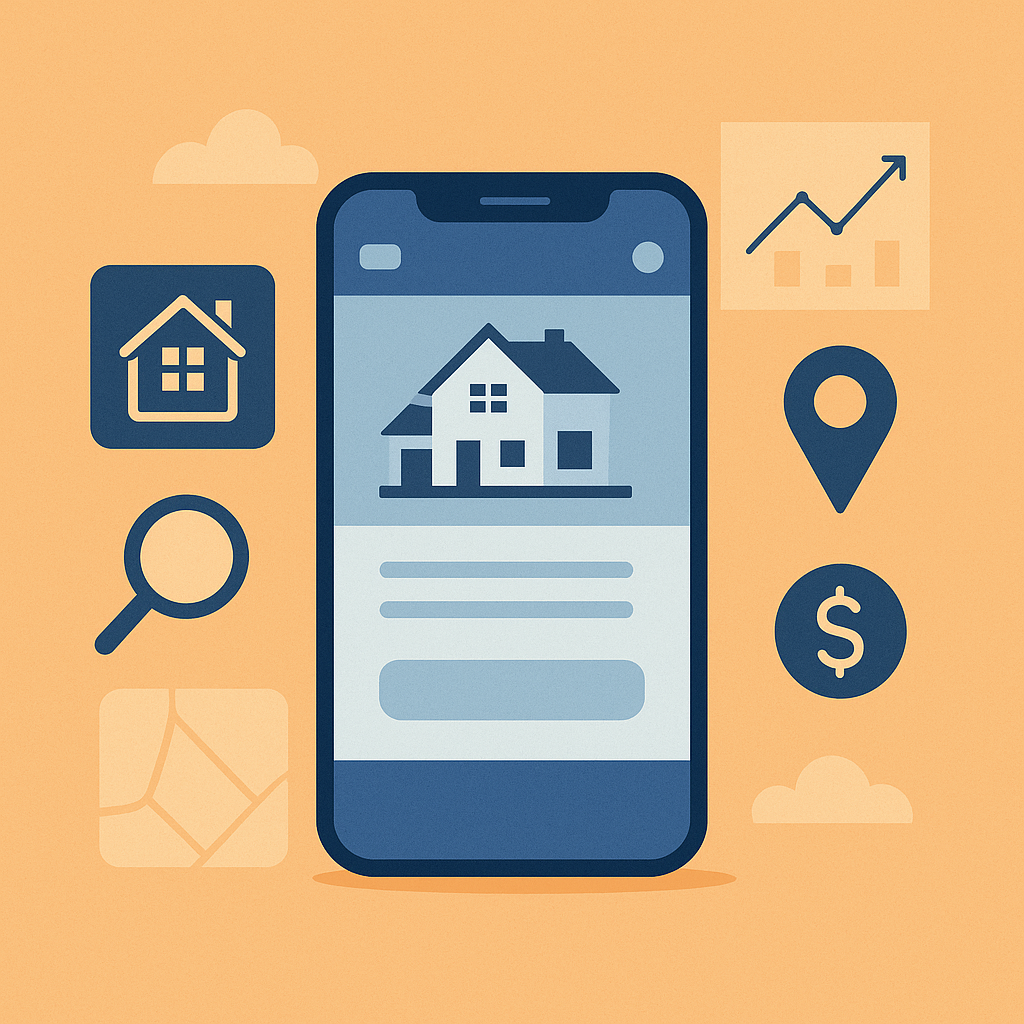What Most Real Estate Apps Get Wrong (and How to Get It Right)

Real estate apps are everywhere. But truly good ones? Rare.
Scroll through the app store, and you’ll find dozens of apps with the same promises—listings, filters, alerts, virtual tours. Yet only a few get traction.
Why?
Because most real estate apps are built for what founders want to show, not what users need to do.
Let’s explore where most teams slip—and what separates the winners from the forgettable.
1. The Features Users Actually Want
The first question most founders ask is: “What should we build?”
But the better question is: “What are people already trying to do—and struggling with?”
Here are the core real estate app features users truly care about:
-
A map that loads fast and updates in real time
-
Filters that understand real-world needs (e.g., commute time, pet-friendly)
-
An intuitive favorites system
-
A fast way to contact agents or schedule viewings
-
Price tracking and alerts that are actually useful
That’s it. The rest is noise until these are perfect.
2. Bad Data Kills Good Apps
Even if your UI is flawless, unreliable data destroys trust. Outdated listings, wrong prices, or broken images create frustration faster than you can fix bugs.
An app like Zillow succeeds because its data is tight. Users believe what they see—and trust builds usage.
This is also where development complexity kicks in. Syncing MLS data, normalizing formats, and updating frequently require a strong backend strategy.
And that’s not easy to DIY.
Working with a skilled real estate app development company makes a difference here. They know which APIs fail silently, how to scale databases, and when to cache vs. stream.
3. The Most Common Mistake? Overbuilding.
One of the costliest real estate app mistakes is building for investors or internal vision—not real users.
Founders often think they need:
-
10+ filters
-
3 types of user dashboards
-
AI features in V1
But what they really need is validation. A lean, testable app. Something that can ship fast, gather feedback, and evolve quickly.
The best way to kill a product? Spend a year perfecting the wrong thing.
4. What the Best Apps Got Right
The best real estate apps—like Zillow, Redfin, and Trulia—didn’t start out huge. They started small, but built around these principles:
-
A clear user persona
-
One core action to optimize (e.g., search, save, schedule)
-
Constant iteration through data and feedback
-
A roadmap driven by usage, not ego
These apps didn’t try to win on features. They won on clarity.
5. The Development Process That Actually Works
A messy product starts with a messy process. Here’s what a clean real estate app development process looks like:
-
Discovery: Define the user, market, and key problem.
-
Wireframing: Focus on flow, not design flair.
-
Prototype: Test assumptions early. Clickable mockups > full builds.
-
MVP Development: Ship with 3–5 core features. Nothing more.
-
Validation Loop: Track behavior, tweak, relaunch.
This process isn’t flashy. But it works.
6. Don’t Be Zillow. Be Useful.
Everyone wants to be the “Zillow of X.” But chasing scale too early is the fast lane to irrelevance.
Instead, zoom in. Focus on:
-
Underserved markets
-
Specific user frustrations
-
Tools for a niche (agents, landlords, student renters, investors)
Zillow already dominates general search. You win by solving the edge cases.
Final Word: Apps Aren’t Products Until They’re Used
An app is just code until it proves value. That means:
-
Every feature must earn its place
-
Every screen must speed up a decision
-
Every update must respond to real user behavior
When you build that way, your app doesn’t just work. It gets used, remembered—and recommended.
That’s how apps win.
- Art
- Causes
- Crafts
- Dance
- Drinks
- Film
- Fitness
- Food
- Spellen
- Gardening
- Health
- Home
- Literature
- Music
- Networking
- Other
- Party
- Religion
- Shopping
- Sports
- Theater
- Wellness
- Script
- App
